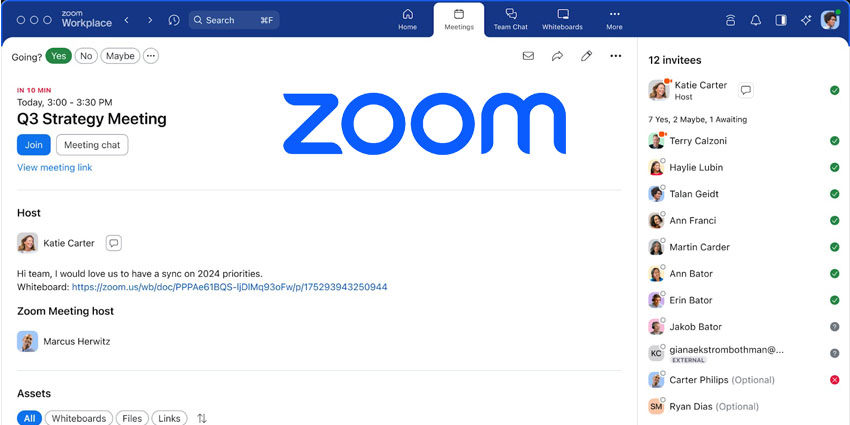Every industry and area of business you care to mention is in a state of flux right now. Born in the cloud businesses that capitalised on digital technologies to disrupt established models and markets are thriving, while the rest of the business world runs to catch up and makes tactical IT “quick fixes” to adapt to the changing world.
The modern workplace was already seeing Artificial Intelligence (AI) and business process automation making its way into production lines, supply chains and weaving through the very fabric of businesses; and it is set to exponentially increase.
The machines really are learning, and the possibilities are nothing short of astonishing. Workforces are changing in terms of skill sets, expectations and demographics. And then there’s the customer; the need to differentiate on something other than price is now more than ever, critical to success. Hardly surprising then, that the talk is all about transformation – to disrupt or avoid being disrupted.
Demand for anytime, anywhere connectivity is accelerating as workforces become increasingly mobile and virtual. As productivity becomes ever more important as a point of competitive differentiation and a catalyst for change, enabling real-time sharing between customers, partners and employees is critical. And digital, decentralised and collaborative workplaces that harness the very ethos of always-on, anytime, anywhere working have given rise to citizen developers.
So, what exactly is a citizen developer?
A citizen developer is a user who creates new business applications for consumption by others using development and runtime environments sanctioned by corporate IT. They build applications to facilitate the processes of business operations while following the standards and guidelines of the IT department. Unlike IT professionals and developers, they may not have formal training in programming and might not even be part of the IT function. Citizen developers are not typically professional developers; they may have some technical or development skills, but it isn’t their main job and they don’t necessarily work in IT.
In the past, end-user application development has typically been limited to single-user or workgroup solutions built with tools like Microsoft Excel and Access. However, today, end users can build departmental, enterprise and even public applications using shared services, fourth-generation language-style development platforms and cloud computing services. Citizen developers can now leverage low code and no code solutions and platforms to develop tools for their organisation. And if we look at the Microsoft 365 space, it’s the Power Platform that citizen developers use to create these tools.
Microsoft recognises that citizen developers can deliver value for their organisations and is empowering them with tools and templates that can speed up the creation process. Power Platform offers a mix of different tools to this end, but the ones used by citizen developers are Power Automate, Power Apps and Power BI.
Power Automate is a platform which allows users to create automated workflows within Office 365, and it comes with templates that can be leveraged to quickly deploy solutions. There is a whole category dedicated just to productivity. It allows users to perform such tasks as sending notifications when important events occur, saving Outlook attachments to shared repositories in SharePoint or Teams, ask your line manager for approval and getting notified when a document is signed. These are just a few examples of some of the processes that can be deployed in a business at the click of a button.
As a further example, imagine you work in communications and want to publish to Teams whenever a Tweet goes out that uses your unique campaign hashtag or mentions your organisation. You can even use cognitive services and AI to detect the sentiment of those tweets and automatically flag messages with negative/positive opinions. Using a template in Power Automate lets you build this workflow easily and quickly. Or, perhaps you work in risk and compliance and deal regularly with risk registers. You can set one up in SharePoint and create a workflow so that when someone adds a risk to the register, you are notified or assigned a task to review it. These are just a couple of scenarios in which Power Automate makes processes easier and effortless within an organisation.
Power Apps lets citizen developers create apps that can be useful for a variety of reasons and across departments. Someone who works in communications and manages a SharePoint intranet as part of their job might want to create a simple feedback form. Power Apps is the go-to tool for projects like this. Even if you’re not a programmer (which, by their very nature, citizen developers are not), Power Apps is simple enough for most people to develop something that meets their requirements.
You can also use Power Apps for tracking areas across the business. For example, a person working in facilities who wants to manage building access cards or an equipment inventory, can create a mobile app that allows employees to log what equipment they are using.
A final example of how citizen developers can leverage the Power Platform is with Power BI. Power BI can be connected to one or multiple data services such as Excel, a relationship database, a website, a SharePoint portal or CRM; almost anything, in fact. From here, you can work with the data using formulas and queries, and build a dashboard, which might be to see revenue within a certain team, or identify which services are underutilised in a certain department. You don’t need to be a developer – you just need to understand the syntax and formulas, like those used in Excel.
The rise of the citizen developer and the tools needed to make it possible is empowering and exciting; but it isn’t without its problems. The Power Platform is a fast-evolving environment, with updates rolled out every few months and new features added. It is constantly shifting, giving citizen developers greater options and opportunities to elicit change to processes within their organisation. As more workflows and apps are created, the potential is there for control to be lost. This has taken IT departments off guard, because the greatest risk associated with citizen developers and empowering people in your organisation to create their own solutions, is shadow IT. This is a challenge for every business, and it needs to be addressed.
IT departments must work closely with the citizen developers in their organisation to collaborate and find a way of managing and streamlining solutions. One way of mitigating the risk of shadow IT, is to create and maintain a catalogue of the solutions that have been developed; an approach which is especially important when taking into consideration employee churn. A ‘techy’ creating a new app that is popular with staff and widely used, only for them to then leave or change role, leaving the app unmanaged, is an all too common scenario. IT teams must be aware of the solutions that are developed and deployed, and who is using them, and maintain and update this catalogue regularly. In short, they need to retain ownership of any and every solution created by a citizen developer.
Even with the potential for escalating numbers of apps and workflows, and a risk of shadow IT emerging, there are more pros than cons to the rise of the citizen developer.
Most organisations have a large backlog of projects and solutions that IT departments don’t have the time, or business understanding, to work through. Citizen developers can play an important part in reducing these backlogs and moving businesses forward. Before these opportunities, people were finding shortcuts and other unmanaged, untracked workarounds which compounded the problem and gave IT teams even more to deal with. Tools like Power Platform mean solutions and workarounds can be monitored, regulated and communicated to the wider business.
The rise of citizen developers and the prevalence of tools to enable them is a good thing; organisations simply need to put some boundaries in place and retain control of what’s being created.
Guest Blog by Davide Ranchetti, Lead Solutions Architect, Core
Davide Ranchetti is a Lead Consultant and Solution Architect at Core, where he leads a team of developers and consultants in designing and developing solutions for Office 365. After graduating with a Master’s degree in Software Engineering from the University of Milano Bicocca, Davide began his career in the Microsoft space in 2012. Since then Davide has worked with reputable international companies and globally recognised brands across different industries.
Core can help your organisation work through a backlog of apps and deliver simple low code and no code solutions that can be handed over to your users and IT departments, to easily maintain and update. We can review your existing solutions and improve them using our specialist knowledge and are already helping many businesses do so. Ask us how.







